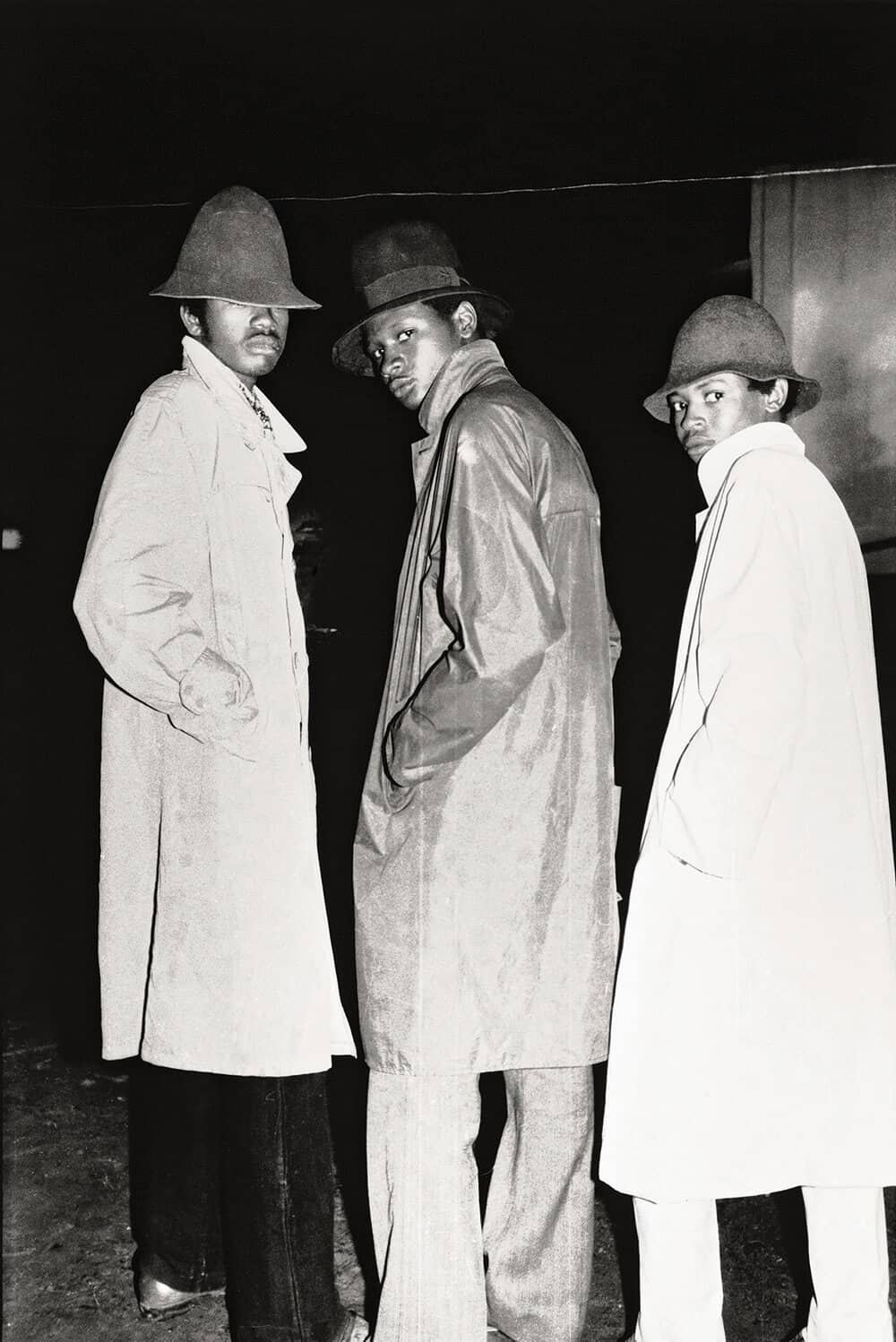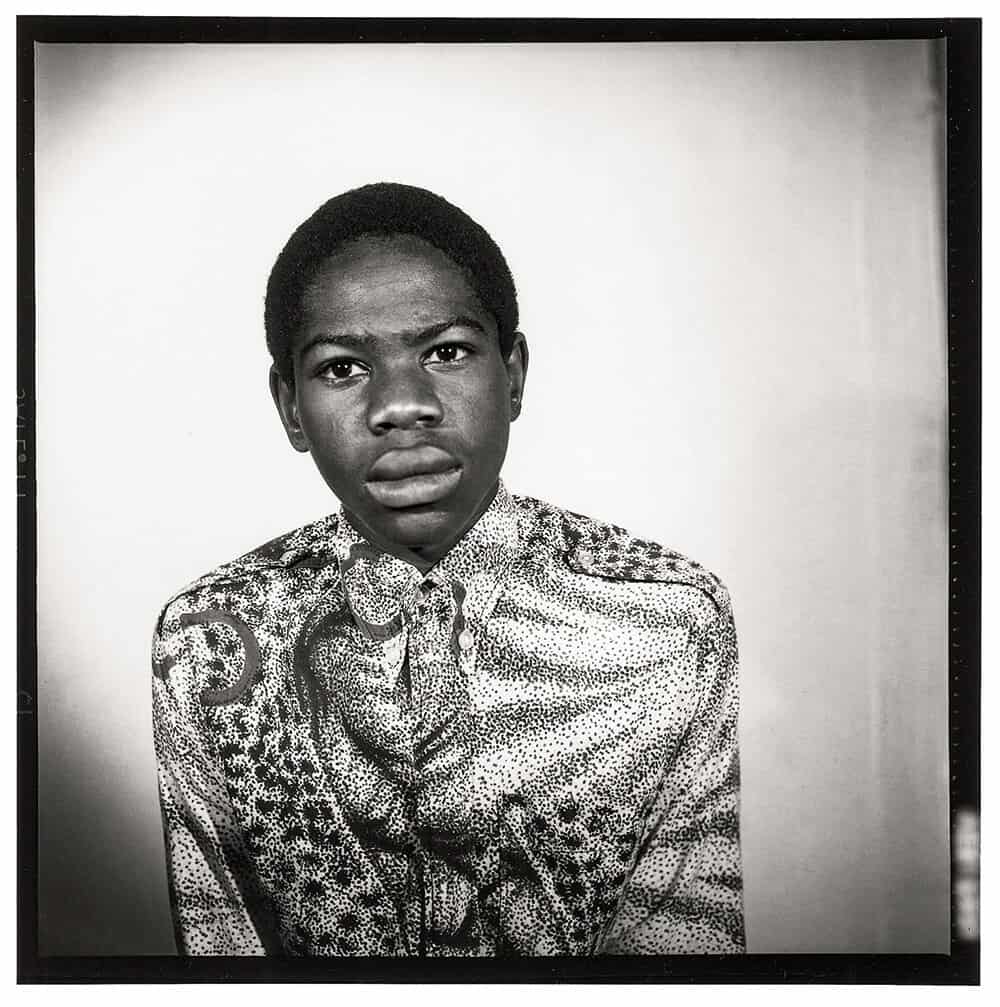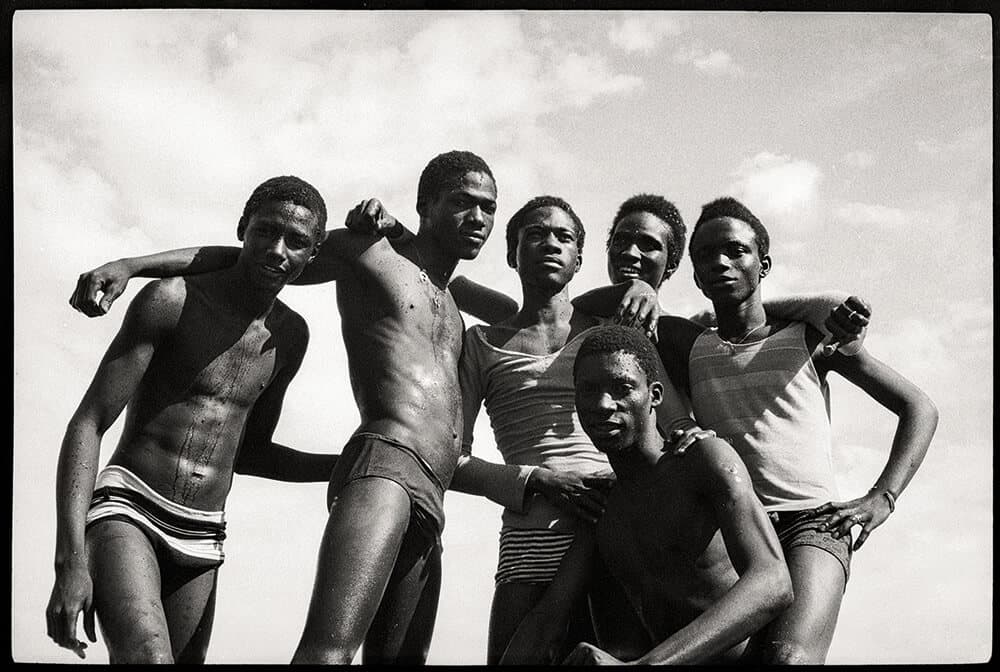André Magnin’s curated celebration of Malick Sidibé
Fondation Cartier pour l’Art Contemporain was the first museum outside of Africa to present a solo exhibition of Malian photographer Malick Sidibé. Now, a year after his passing, the Fondation once again gathers Sidibé’s extensive archive of photographs for ‘Mali Twist’, a retrospective exhibition that pays homage to the nation’s unofficial portraitist.
It only made sense that André Magnin, the man who curated Sidibé’s first exhibition at the Fondation Cartier, as well as his close friend, would some 20 years later curate ‘Mali Twist’. Magnin has been an independent art curator since 1980. His childhood in Madagascar ignited his dedicated love for Africa, a continent he would later return to almost 100 times. Magnin lives and works in Paris, where his art gallery MAGNIN-A is situated. The gallery is an acknowledged name in the modern and contemporary African art scene, representing both emerging and established artists such as Chéri Samba, Romuald Hazoumè and Omar Victor Diop.
Magnin has proved to be one of the most pivotal figures in promoting contemporary African art, starting from the renowned and iconic 1989 ‘Magiciens de la Terre’ exhibition at Centre Pompidou in Paris. This was the first true, international exhibition of global contemporary art. It was after this exhibition that Magnin was introduced to Jean Pigozzi – businessman, photographer and devoted collector. The pair would go on to create Pigozzi’s private Contemporary African Art Collection, for which Magnin alone sought out the artists across the African continent – leaving the collection 20 years later with over 15 000 works.
 Malick Sidibé, Les faux agents du FBI, 1974 Signed gelatin silver print, 2011. 60 x 50cm. © Malick Sidibé Courtesy collection André Magnin.
Malick Sidibé, Les faux agents du FBI, 1974 Signed gelatin silver print, 2011. 60 x 50cm. © Malick Sidibé Courtesy collection André Magnin.
After years of colonialism, violence and poverty, Sidibé’s photographs shed a new light on an African nation revelling in all its glory of independence. Sidibé has created a legacy of photography – he was also the first African and the first photographer to receive the Golden Lion for Lifetime Achievement at the Venice Biennale in 2007. He quickly become known as the ‘Eye of Bamako’, a true observer of cultural exchange. Aside from being a testament to Sidibé’s personal experiences, his photographs have become historical documents as they encapsulate the revolutionary exposure of a newly-liberated society experiencing Western music and fashion for the first time.
COLLECTOR spoke to André Magnin about his career in the contemporary African art scene and how artists such as Malick Sidibé changed the global socio-political perception of Western Africa in the 1960s.
COLLECTOR: Nicknamed the ‘eye of Bamako’, Malick Sidibé is an iconic figure in the global art and photography scene, and has played a vital role in establishing a creative ‘voice’ from Mali, and, more so, the entire African continent – how did you go about choosing and curating the vast archive of Sidibé’s vintage photographs for ‘Mali Twist’?
André Magnin: The Malick Sidibé archives are almost 400 000 images, from 1962 to 1978. ‘Mali Twist’ is totally different from any other Malick Sidibé exhibition because nobody has access to such images; it is also the largest exhibition of Malick’s work that has been on show.
Malick would come back from a party he attended and would make prints of all the photographs he took during the night, and write the title of the club and the date. People who were at the party would then come on the following Tuesday and order prints. Sometimes they did not have enough money to pay for them. Most of the prints ordered were small, sometimes larger, but this was very rare as they were too expensive to print and you could not find large photography paper in Mali in the 1960s and 1970s.
In 1992, about 40 or 50 years later, I found almost 100 Malick prints at the framer, who was 200 metres from Malick’s studio. There were hundreds of prints made for clients who never received them in the end because they never paid.
I put together all the names of the clubs between 1962 and 1978, and that became the exhibition we have now. Altogether there are 260 photographs on show. There are also 30 never-before-seen pictures from his studio. For me, it was easy to choose as I have seen all of his images, so it was easy to know the best ones to exhibit. He is truly the eyes of Bamako. Perhaps one day I will make another show, with 250 totally different images. It’s taken me 10 years; I have been to Bamako 80 times to see Malick. Each time, I see all of the negatives of the images he has taken. I think his real work comes from the years 1962 to the end of the 1970s – less than 20 years.
It was like a miracle for Malick, because when I met him in 1992, he thought his career in photography was over – there was no photography materials or paper – there was nothing in Bamako. I supplied him [with] everything he needed. After his first show at the Fondation in 1995, it was like a second life in photography. He was able to do very well from his photographs.
Africa is a continent that is often associated with colonialism, violence and oppression. Sidibé was instrumental in creating a new ‘image’ of Africa, one that exhibited a liberated and elated African society. Sidibé’s rise in the art world as a contemporary artist disrupted the pattern of a strictly Western history of art. African artists would come to completely disrupt the Euro-American art monopoly in the years following. You travelled to Mali soon after they declared independence. Please tell us about how you came to meet Sidibé?
 Malick Sidibé, c. 1972. Gelatin silver print, 120 x 120 cm. © Malick Sidibé.
Malick Sidibé, c. 1972. Gelatin silver print, 120 x 120 cm. © Malick Sidibé.
I met Sidibé when I travelled to Bamako for the first time to try and find an unknown photographer that I had seen in New York at the Museum for African Art, at the exhibition ‘Africa Explore’ in 1991. There were three vintage photographs, the label stated ‘Unknown’. I showed the photographs to Jean Pigozzi, who was totally excited by these images. I said that if this unknown photographer from Mali is living, I will discover him. So, early in 1992 I went to Mali. When I arrived in the city of Bamako I found a driver whom I showed a photocopy of the pictures. He didn’t know about the images but he brought me to the only man who had a studio in Mali, at the time taking passport photographs and repairing cameras. This man was Malick. I showed the unknown images to him and immediately Malick said it was Seydou Keïta. Fifteen minutes later, Malick brought me to Keïta.
I did the first solo exhibition of Seydou at the Fondation Cartier in 1994. Seydou told me I should look at Malick’s photographs, saying that he is the fantastic photographer of the young people, capturing the freedom after Mali independence. I was told he was the eyes of Bamako. He was extremely popular, very friendly, generous and open; he was loved by everyone. He was a star! The first people to discover him were the Malian people; it was not me. All of his work showed the love he had for the Malian people. He showed people a joyful, beautiful image of Africa. There were more than 100 photographers in West and East Africa but I had never seen images like Malick’s work. He showed people dancing and free. The images changed how we see Africa and the energies it has.
Many African countries did not have the museum infrastructures and global platforms that Europe had available, making the awareness of contemporary African art that much slower. Jean Pigozzi’s Contemporary African Art Collection is one of the most important and largest collections of African art that exists today. Can you tell us about Jean Pigozzi’s Contemporary African Art Collection, which you directed and curated for 20 years?
I curated and directed the Contemporary African Art Collection from 1989 to 2009. I was alone to build his collection, I couldn’t buy 500 pieces at a time, and Africa is a big continent to travel and research. I couldn’t buy from everyone, not because I didn’t love the work, but it would have been too exhaustive.
At the time, there were no museums, no collectors, no galleries, and no one doing research. Galleries did not have budgets to buy contemporary African art. The few museums that were established did not support contemporary art. The painters put their works on the wall, on the street – that was their gallery. It was controversial at first, but it was a revolution. We changed the perspective of world-wide art; it was no longer just European and American art. Nobody knew of Indian, African or Chinese contemporary art at the time; if they did, it was very few. Pigozzi was one of those first people to know about African artists. It took a very long time for it to gain recognition, almost 10 years. The problem was because there were no institutions in Africa, except in South Africa. And, if there was, they focused only on classical African art like masks and sculptures: nothing for contemporary or modern art. It was a very slow interest.
Europe was very excited to discover new artists. It was totally unlike what they knew; it was free and the art created its own story. Through modernisation, people become very open to diversity, foreign art and cultures. It changed everything; it was the end of America and Europe as the centre of the world. Buenos Aires, Lagos, Cape Town, Delhi, Sao Paolo all became the centres.
Sidibé’s photographs document Mali’s independence, the explosion of nightlife, music, fashion, joy and youth culture. How do you feel Malick’s work has contributed to the recognition of photography as contemporary art?
Even though Malick’s style was reportage photography, it had such joy and energy and freedom. It was so beautiful – it was art. But also, Malick had his studio where it was a very intimate relationship between the client and Malick. At first, Malick was a painter and was working as an assistant to another photographer. It was then that he found photography to be a much more powerful tool than painting. Malick knew the people so well, he wanted to give them beautiful photographs. Malick definitely helped photography become more of an art form.
 Malick Sidibé, À la plage, 1974. Gelatin silver print, 51 x 61 cm. Courtesy galerie du jour agnès b. Paris. © Malick Sidibé. Images courtesy of Fondation Cartier pour l’Art Contemporain.
Malick Sidibé, À la plage, 1974. Gelatin silver print, 51 x 61 cm. Courtesy galerie du jour agnès b. Paris. © Malick Sidibé. Images courtesy of Fondation Cartier pour l’Art Contemporain.
African photographers became more famous in the 1990s, that was when the market started and when photographers were seen more as artists. Of course, there were a few exceptions but before that time, photographers were not so much featured in the museums. The 1995 Malick exhibition at the Fondation Cartier was an international success, which went on to do a world tour to Japan, South America, Germany and Spain.
Who do you think have been the principal figures and institutes in promoting African artists? With this question in mind, how do you feel the Zeitz MOCAA in South Africa has contributed to the elevation of contemporary African art?
The Fondation Cartier was truly a key institute. I helped organise almost 14 exhibitions that toured globally. Also, Pigozzi’s collection had a large influence because we were the first African art collection. Perhaps there are only 10 to 20 very important collectors collecting African art, each holding different collections.
I haven’t yet been to see the Zeitz MOCAA, but I know that it is one of the most important projects in Africa, even though the collection is very small, if you compare it to Pigozzi or the many other African art collections. It’s also very important as the Zeitz MOCAA is open and free for all children. But what’s really central is the project, not the size of the collection.
Tayla Withers is a writer on ART AFRICA’s editorial team.
FEATURED IMAGE: Malick Sidibé, Un yéyé en position, 1963. Gelatin silver print, 60,5 x 50,5 cm. Collection Fondation Cartier pour l’Art Contemporain, Paris. © Malick Sidibé. Courtesy of Fondation Cartier pour l’Art Contemporain.



